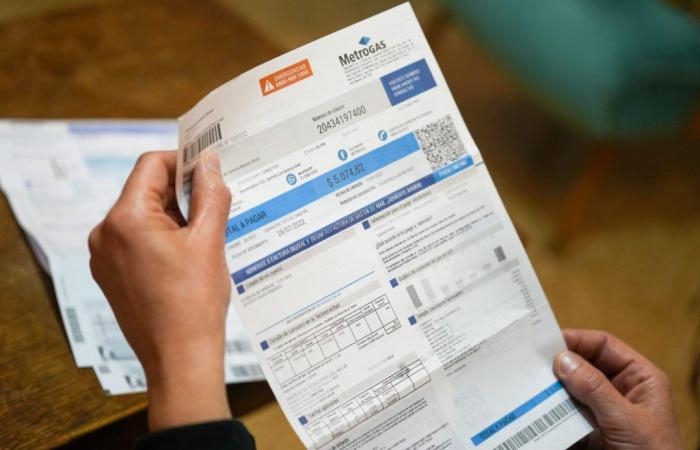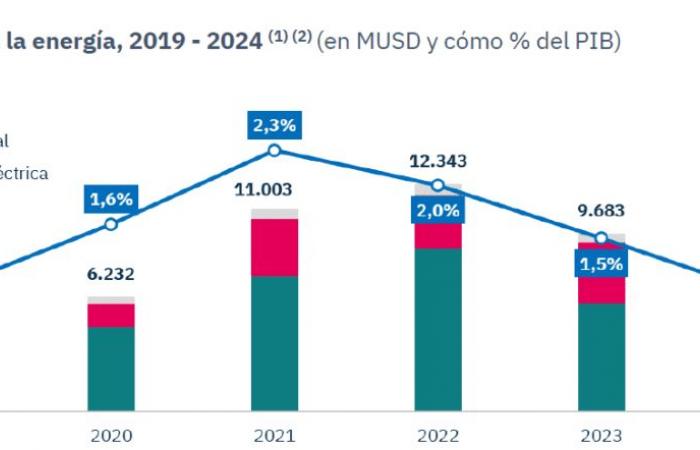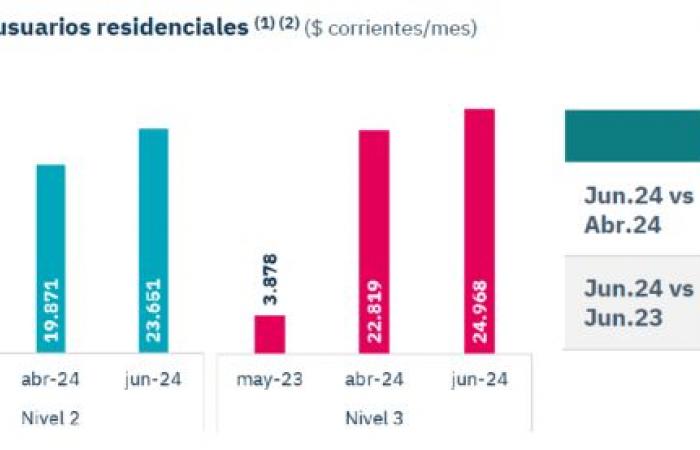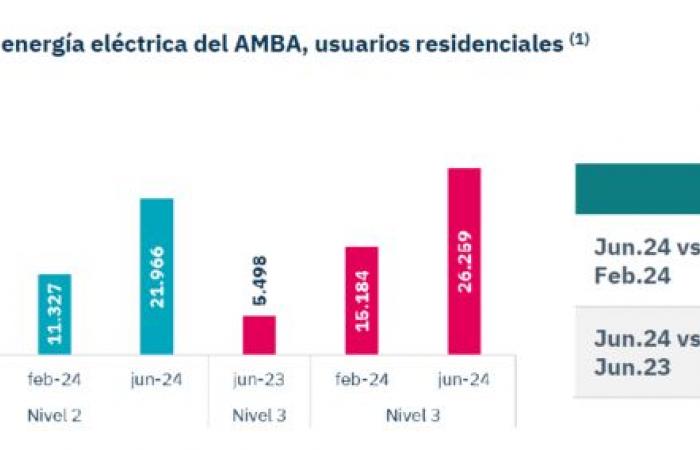The next electricity bills received by low-income households in the metropolitan area will have average increases of up to 465% annually. Meanwhile, gas bills for households with income equivalent to up to a basic family basket ($851,000) will have a 745% increase compared to June 2023, right in the period of highest consumption. Middle-income households will pay 378% more for electricity and 544% more for the mains gas they consume.
The tariffs come at a time when the Government is celebrating the lowest monthly inflation figure since January 2022 and a partial recovery of salaries. It seeks to dismantle the account of energy subsidies, which will represent this year – without new devaluation through – 1% of GDP, or USD 6,744 million.
The increases for the lowest sectors are significantly higher than both inflation and the update of the Universal Child Allowance and the Alimentar card, the Government’s main income policies to cope with the adjustment. This Friday, the IMF once again asked the administration of Javier Milei and his Minister of Economy, Luis Caputo, to improve the “quality” of the adjustment with Income Tax and other progressive taxes. But it also demanded definitive progress in reducing energy subsidies.
The data on how the gas and electricity bills will be arises from a joint work carried out by Economía & Energía, Nicolás Arceo’s consulting firm; and PxQ, by Emmanuel Álvarez Agis. These numbers serve to clean up the different resolutions that, in recent weeks, completed the scheme of subsidy cuts and increases in the electricity and gas distribution segments that the Government began in the second month of the year.
In February and April, respectively, the Secretary of Energy of Eduardo Rodríguez Chirillo ordered strong increases for the charges received by transporters and distributors of electricity in the metropolitan area and of gas at the national level. It also moved forward with an update of the price of energy for commercial and industrial users and for “N1” or high-income households.
At Cenital we care that you understand. That’s why we set out to tell a complex reality in a simple way. If you like what we do, help us continue. Join our circle of Best Friends.
Gas sharply increased the fixed charge that users pay regardless of consumption and that remunerates the distributors’ service. That impacted prices in April and began to reach homes and businesses between May and this month. But a regulation that tied the price of energy to the evolution of salaries prevented progress with the removal of subsidies for medium (N3) and low (N2) income users.
Caputo and Rodríguez Chirillo removed that obstacle on May 28 through decree 465. Not only were these limits on increases eliminated, but they also established blocks of subsidized consumption of electricity and gas that, according to specialists, are lower than average consumption . That means that low- and middle-income households will not only pay more for subsidized energy, but they will also pay a portion of their consumption at the same full price, making the bill even more expensive.
The regulations also advanced with the new scheme on which the Government seeks to reduce subsidies. In electricity, it established a single price for the entire network and defined that the middle segment pays 56% of that amount and that the low-income segment pays 28%. In gas, a subsidized value was provided for all users. According to Juan José Carbajales, from the consulting firm Paspartú, the Executive defined a rate for the winter of 4.8 dollars per million BTU (MBTU) for gas producers, but 3.3 dollars for N1 users, 1.5 dollars for N3 and 1.2 dollars for N2. The State makes the difference between generation and what users pay.
The impact on pockets
This combo is the beginning of a reduction in subsidies that the Government promised would be gradual, but which is already being felt in the pockets. According to the E&E and PxQ report, high-income users in the metropolitan area will face from June a 406% year-on-year increase in gas bills and a 228% annual increase in their Edesur and Edenor bills. Middle-income users will receive gas bills 544% more expensive than a year ago and will face increases of 378% in electric energy in the same period. Lower-income households will bear the brunt: they will pay 745% and 465% more for gas and electricity, respectively.




Measured as a percentage of salary, bills exceed double their weight in income. In June 2023, high-income households spent 1.9% of their salaries paying for gas and 1.6% for electricity. Now, gas bills will take 3.7% of the income and electricity bills will take 3.1%. Households in the medium and low segments had the most outdated rates and that is why the increase is significantly greater. They allocated 1.4% of their income to pay for gas and 0.5% to pay for electricity. Now, these consumptions will mean between 2.8 and 3.2% (gas) and between 1.2% and 1.7% (electric energy). As a reference, in the nineties 2.1% of income was spent on gas and 2.6% on electricity. During Kirchnerism, rate freezes brought that ratio to 0.9% (gas) and 1.6% (electricity).
The consulting firm Empiria, run by former Economy Minister Hernán Lacunza, compared the average bills that users in the metropolitan area will pay with the December values. That month, the devaluation of the official exchange rate that Caputo ordered made the subsidy bill more expensive, because the increase in the price of energy – which is measured in official dollars – was more than double. If the average electricity and gas bills are added, high-income users will pay, from June, almost 95% more than in December in real terms, discounting inflation. The middle segment will pay almost 200% more in real terms for energy and lower-income users, 178% more – always discounting the CPI.


Commercial and industrial users will face even larger increases. According to Arceo and Álvarez Agis, gas bills for lower consumption businesses will rise 1,142% annually at current prices, against an inflation of 276.4% annually in May. The most intensively used meters will have increases of up to 736% on average and businesses of 433% in the case of electrical energy.
These changes will have an impact on the Consumer Price Index (CPI) of approximately one point, according to different estimates. The thawing of prepaid medicine fees starting in June will add another item to the bill. For this reason, consultants expect that June will mark an index of around 6% monthly.
Despite this, the initial devaluation and the delay in applying the rate changes limited the impact of the final prices on the subsidy account. Spending will be reduced by about a third and will go from 1.5% of GDP in 2023 to 1% this year, according to E&E and PxQ. The rate increase prevents the account from growing, but the determining factors of the reduction are the lower price of energy due to the greater transportation capacity from Vaca Muerta – the Néstor Kirchner Gas Pipeline – and the lower import price of liquefied natural gas. The bonds with which the Government paid the generators the first two months of energy also reduce the bill by about USD 533 million.










